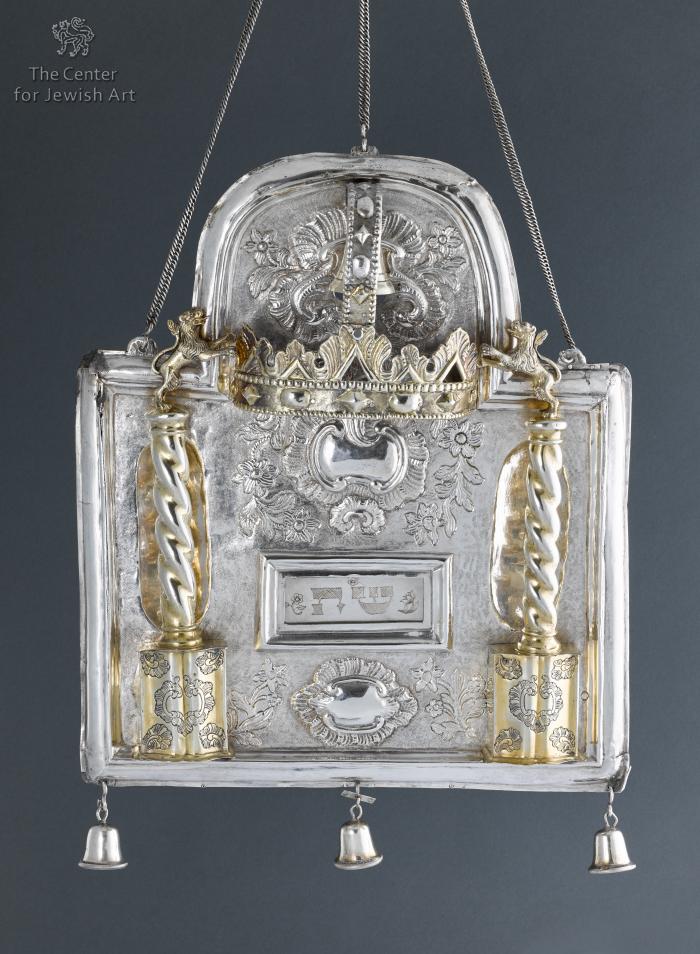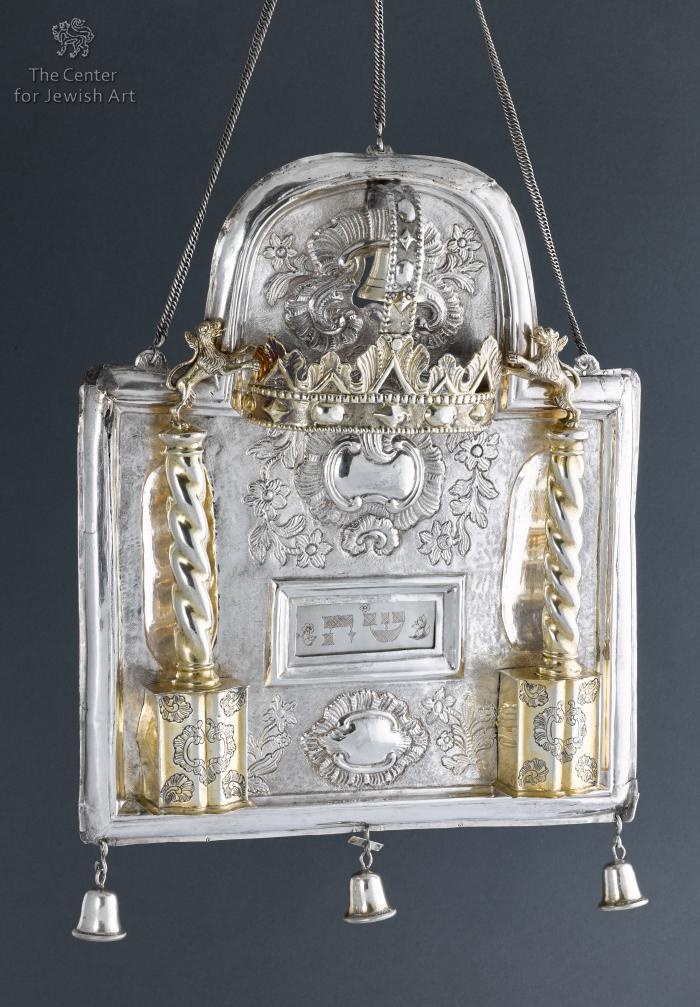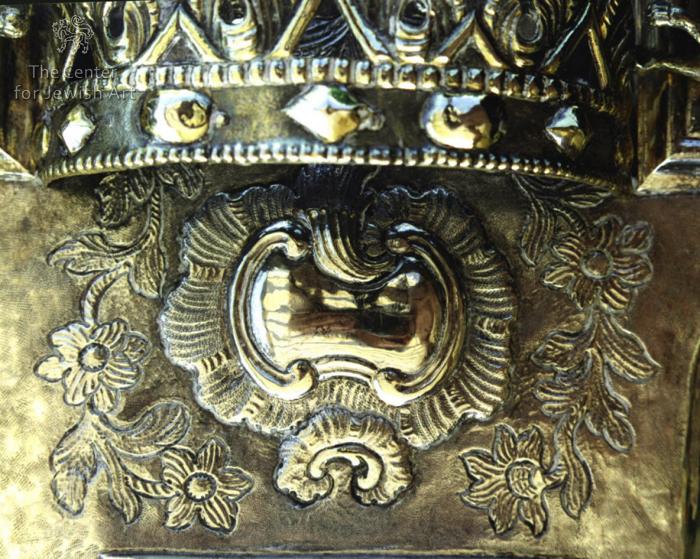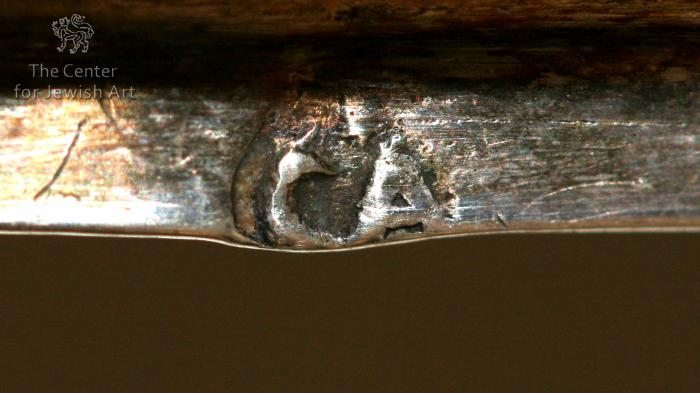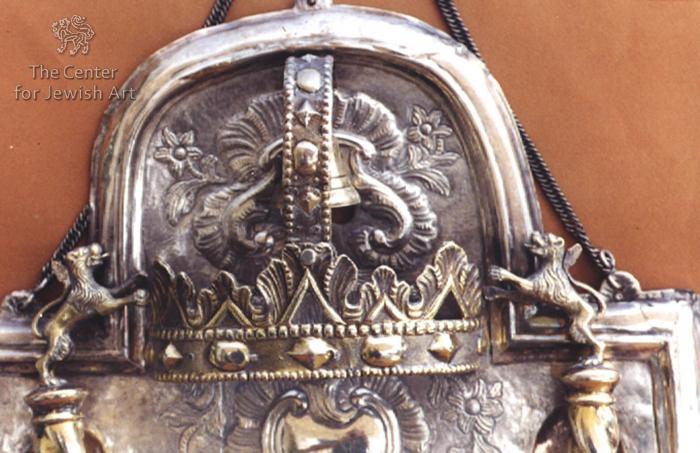Obj. ID: 37242 Torah shield, Nuremberg (Nürnberg), circa 1760

sub-set tree:
C | Crown
H | Heraldic composition | Supporters | Two lions
O | Ornamentation: | Foliate and floral ornaments | Floral motif
B | Branch
F | Flower
C | Columns | Twisted columns
|
The following description was prepared by William Gross:
Breastplates – ornamental metal plates or shields hung in front of the Torah scroll – are found in all Ashkenazi communities, as well as Italy and Turkey, but designed differently in each community. In most cases, the breastplate is made of silver or silver-plated metal. In Italy, the breastplate is shaped like a half-coronet and known as the Chatzi-keter, "half-crown." In Turkey, the breastplate is called a Tas, and assumes a variety of shapes – circular, triangular, oval, or even the Star of David. In Western, Central, and Eastern Europe the breastplate is called either Tas or Tziz; its function there is not merely ornamental: it designates which Torah scroll is to be used for the Torah reading on any particular occasion, with interchangeable plaques.
The most notable early breastplates, from 17th-century Germany and Holland, were either square or rectangular, but over time they became rounded and decorative, and bells or small dedicatory plaques were suspended from its lower edge. During this period, the design of breastplates was influenced by that of the Torah Ark and the parokhet (curtain) concealing it, featuring various architectural motifs, the menorah (the seven-branched candelabrum), Moses and Aaron, lions, or Torah crowns.
This Tas is a fine example of the Nuremberg form Torah shield, or "Tas", as it is known in Hebrew. This form continued to be made in Nuremberg for almost 150 years starting in the early 18th century. This example is larger than most. The large, elegant pillar bases, the distinguished twisted columns, the three-dimensional cast lions, and the fine decorative work on the backplate all make this a Tas that is out of the ordinary. As with many Nuremberg masters, this silver mark "CA" is, as yet, unidentified. Nuremberg was one of the centers of silverwork in Germany and for the crafting of Jewish ritual art as well, particularly in the 19th century.



